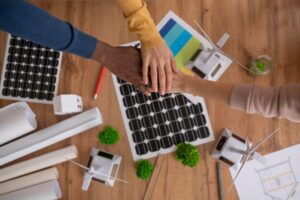
The Essential Initial Phase in Designing State-of-the-Art Factories

In the field of modern manufacturing, architects and engineers hold the key to revolutionizing the way products are made. Creating a state-of-the-art factory goes beyond just blueprints and machinery; it involves delving deep into the client’s business intricacies.
This article outlines the critical initial stage of planning a manufacturing facility that sets the stage for innovation and efficiency.
Understanding the Client’s Business Process
When architects and engineers begin the process of planning a state-of-the-art factory, they step into the shoes of the client’s business. Understanding the client’s business process is akin to decoding the DNA of the factory.
It involves systematically mapping out how raw materials are transformed into finished products. By doing so, these experts lay the groundwork for a seamless, synchronized workflow that minimizes bottlenecks and maximizes output. For instance, a production process engineer might diagram the process of producing a car, from designing the car to assembling the car to shipping the car to a dealership.
Understanding the Complex Supply Chain
The supply chain is the circulatory system of any factory. Architects and engineers meticulously navigate the complex supply chain to ensure that the facility’s layout aligns with the flow of materials and goods.
This strategic placement optimizes logistics, reduces delays, and ultimately enhances productivity. From raw material intake to final product distribution, every link in the supply chain is considered.
Understanding the Machinery Needs

In the heart of a state-of-the-art factory lies the machinery that brings ideas to life. Architects and engineers work closely with clients to understand their machinery requirements and capacities. For example, a client may need a specific machine to produce a specific component, such as a spinning machine for yarn production.
Customizing spaces for machinery involves not only providing physical accommodations but also ensuring that the layout allows for future expansions and technological upgrades.
Fine-Tuning Operations

The success of a factory hinges on the seamless coordination of operations. Architects and engineers take the time to comprehend the client’s operational intricacies, from employee workflows to quality control processes. This understanding helps in creating layouts that promote efficiency, reduce waste, and foster a culture of continuous improvement.
Embracing the Client’s Business Sector
Every industry has its own set of rules, regulations, and challenges. Architects and engineers immerse themselves in the client’s business sector, gaining insights into industry-specific compliance requirements and best practices. This knowledge is woven into the fabric of the factory’s design, ensuring that it aligns with the client’s industry needs.
Combining Form and Function
A well-designed factory isn’t just about functionality; aesthetics plays a vital role as well. Architects infuse creativity to craft workspaces that are not only efficient but also visually pleasing. The harmony between form and function creates an environment that fosters innovation, creativity, and a sense of pride among employees.
Sustainability at the Core

In an era of environmental awareness, sustainability takes center stage. Architects and engineers incorporate eco-friendly features, such as energy-efficient lighting, waste management systems, and renewable energy sources.
This commitment not only reduces the factory’s carbon footprint but also positions the client as a responsible corporate citizen.
Adapting to Future Evolution
A state-of-the-art factory is designed not just for the present, but with an eye towards the future. Architects and engineers ensure that the layout is adaptable to changing demands, introducing modular designs and scalable infrastructure. This forward-thinking approach allows the factory to evolve seamlessly as industry trends shift.
Making Sure Everyone Works Together
Designing a factory is a collaborative symphony. Architects, engineers, and the client’s teamwork in tandem to bring ideas to life. This collaborative synergy brings together diverse perspectives, resulting in a final design that reflects the client’s vision while leveraging the expertise of the entire team.
Pioneering the Future of Manufacturing
In the field of state-of-the-art factories, architects and engineers play the role of pioneers. By immersing themselves in the client’s business process, supply chain, machinery needs, operations, and industry sector, they lay the foundation for an innovative and efficient facility.
This pivotal first step is the bridge that connects concepts to concrete reality. If you’re ready to begin on your journey toward a cutting-edge manufacturing facility, connect with us at VMS. Your vision is our blueprint for success.
Our expert team is prepared to turn your aspirations into a state-of-the-art factory that sets new industry standards. With over 50 years of experience and a team of highly skilled professionals, VMS can help you with any project, big or small.
Contact us today to learn more about our services and how we can help you succeed.






